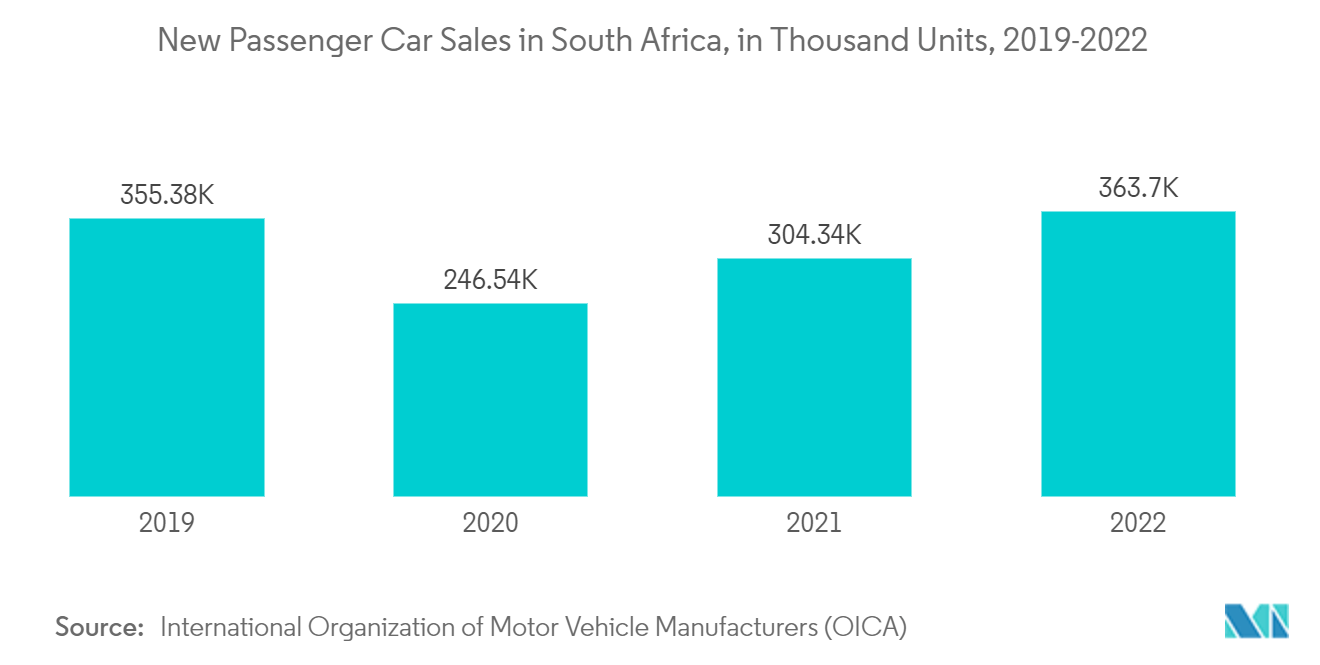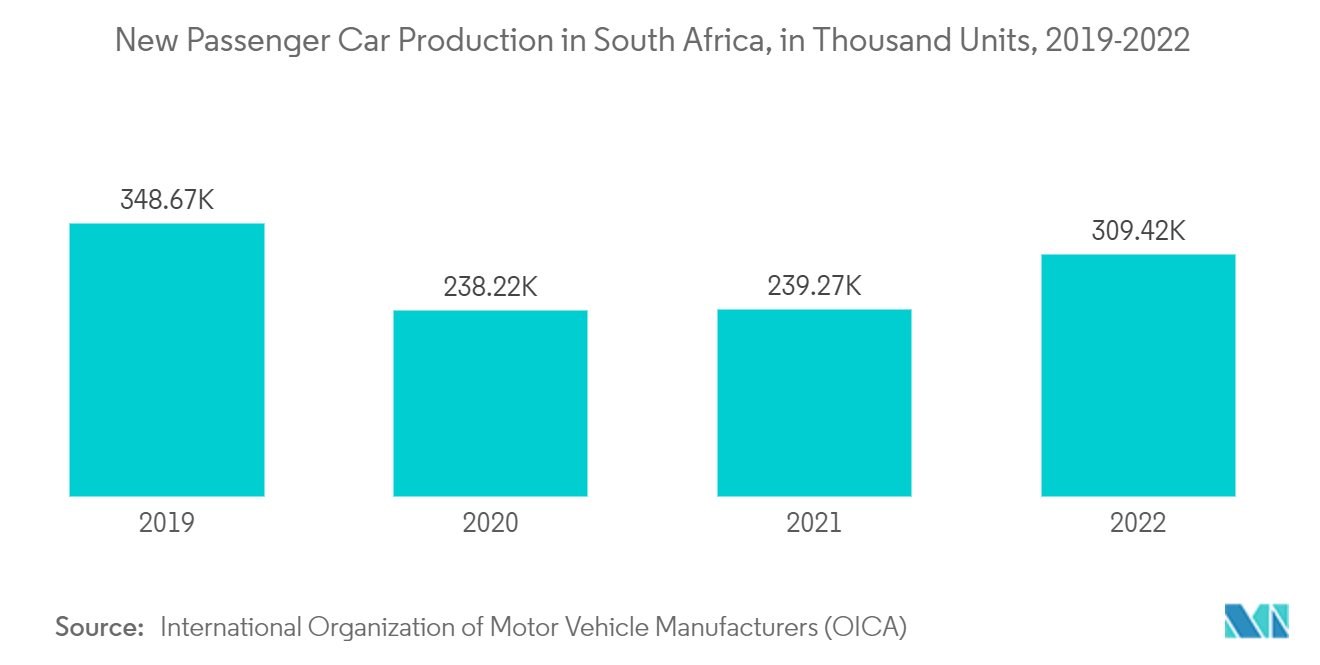Market Trends of South Africa Automotive Carbon Fiber Composites Industry
Passengers Cars to Gain Traction During the Forecast Period
Consumers increasingly prefer to use private transportation mediums due to increasing urbanization and growing purchasing power across South Africa. As more consumers migrate to urban areas for better employment and financial opportunities, a massive demand for passenger cars will exist in the country, which will assist in expanding the market for carbon fiber composites as automakers strategize to use this material in their vehicles to reduce carbon emissions.
- According to the World Bank, the urban population as a percentage of the overall population in South Africa stood at 68.33% in 2022 compared to 67.84% in 2021.
- According to the International Organization of Motor Vehicle Manufacturers (OICA), new passenger car sales in South Africa reached 363.6 thousand units in 2022 compared to 304.3 thousand units in 2021, recording a Y-o-Y growth of 19.5% between 2021 and 2022.
South Africa is one of the leading countries with optimal automotive manufacturing capacity on the African continent. Therefore, to cater to the surging demand for passenger cars, manufacturers are ramping up their production capacities in the country, which is fuelling the demand for carbon fiber composites. Advanced materials such as carbon fiber are essential for boosting the fuel economy of modern cars while maintaining performance and safety. An estimated 10% reduction in the vehicle’s weight can transpire to a 6-8% increase in fuel economy. Since it takes less energy to accelerate a lighter object than a heavier one, lightweight materials offer great potential for increasing vehicle efficiency and fuel economy.
- In March 2023, Stellantis signed an MoU with the Industrial Development Corporation (IDC) and the Department of Trade, Industry, and Competition to develop a manufacturing facility in South Africa by the end of 2025. This project aims to ensure that the company can sell one million vehicles in the region by 2030 with 70% regional production autonomy.
With the improvements in road transportation infrastructure and the government's initiatives to make South Africa a leading automotive manufacturing hub in Africa, a massive demand for passenger cars will exist, thus positively impacting the demand for carbon fiber composites in the coming years.

Exterior Segment to be the Dominant Category by Application Type During the Forecast Period
Among applications, the exterior segment is expected to lead the market for automotive carbon fiber in terms of value and volume. The growth of this market segment can be attributed to the increased demand from manufacturers to produce several exterior parts, such as fenders, hoods, bumper beams, and deck lids of vehicles. Adopting carbon fiber increases the durability of vehicles, thereby ensuring a long life cycle of the parts and vehicle. The exterior parts of vehicles manufactured from composites also offer high stiffness, resulting in minimum damage to occupants in case of accidents. Therefore, with the rising vehicle production across the country, the demand for carbon fiber composites utilized in the production of exterior body parts showcases surging growth.
- According to the OICA, new passenger car production in the country reached 309.4 thousand units in 2022 compared to 239.2 thousand units in 2021, representing a Y-o-Y growth of 29% between 2021 and 2022.
The government's aggressive push toward the adoption of electric vehicles and shifting consumer preferences to avail of eco-friendly vehicles are fuelling the growth of the EV market in South Africa, thus positively impacting the demand in the exterior segment of the market, as automakers increasingly prefer to utilize carbon fiber composites to manufacture exterior body parts of EVs.
- The government of South Africa has committed to reducing carbon emissions by 40% below the 2010 level by 2030 and reaching net zero carbon emissions by 2050 as part of its long-term strategy.
- In December 2023, the South African Ministry of Trade announced its plan to manufacture the country's first electric vehicle by 2026 as part of the broader “Just Energy Transition (JET)” plan for a low-carbon and climate-resilient economy. The Ministry stated that the transport sector needs an investment of USD 6.84 billion from 2023 to 2027 to contribute to the country's decarbonization commitments.
With such developments in the country's EV charging infrastructure and the integration of various EV players, such as Telkom, the demand for carbon fiber composites for producing exterior body parts is expected to grow massively during the forecast period.

